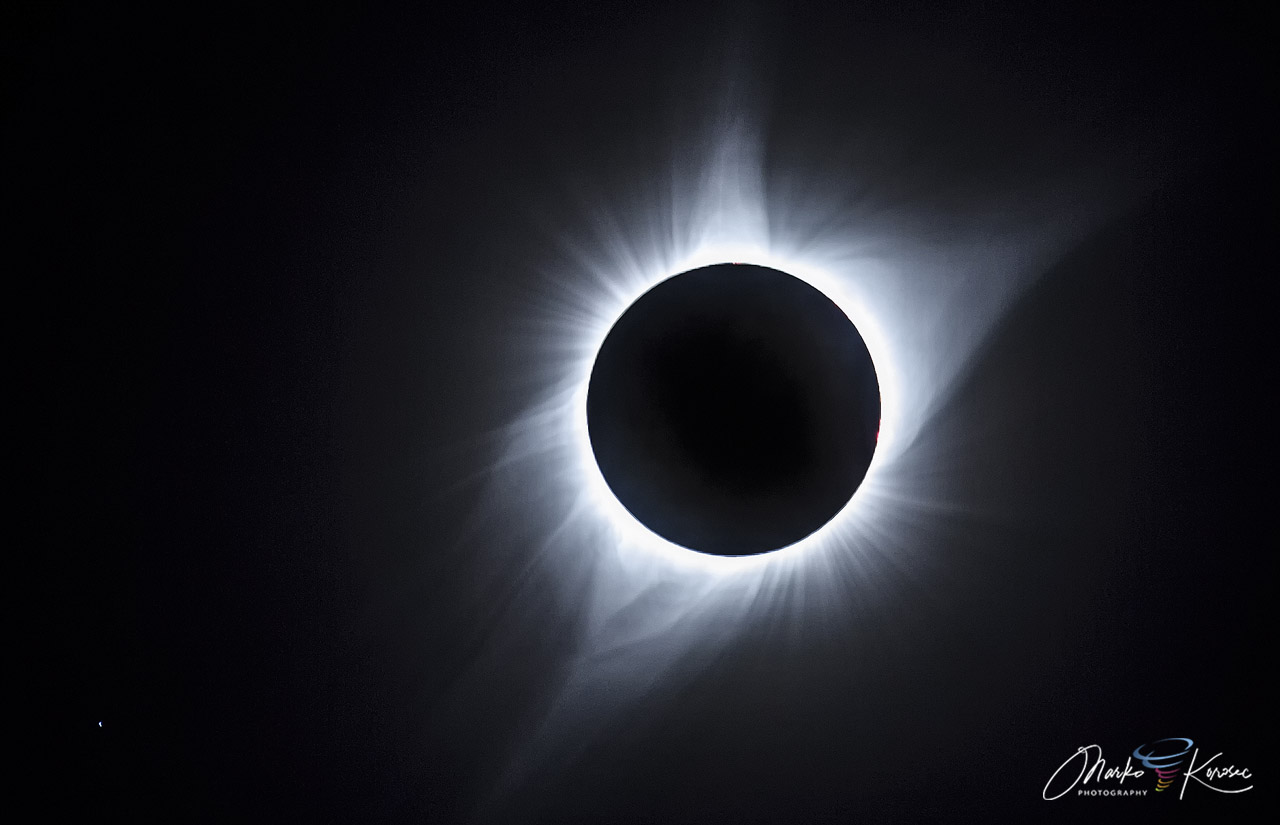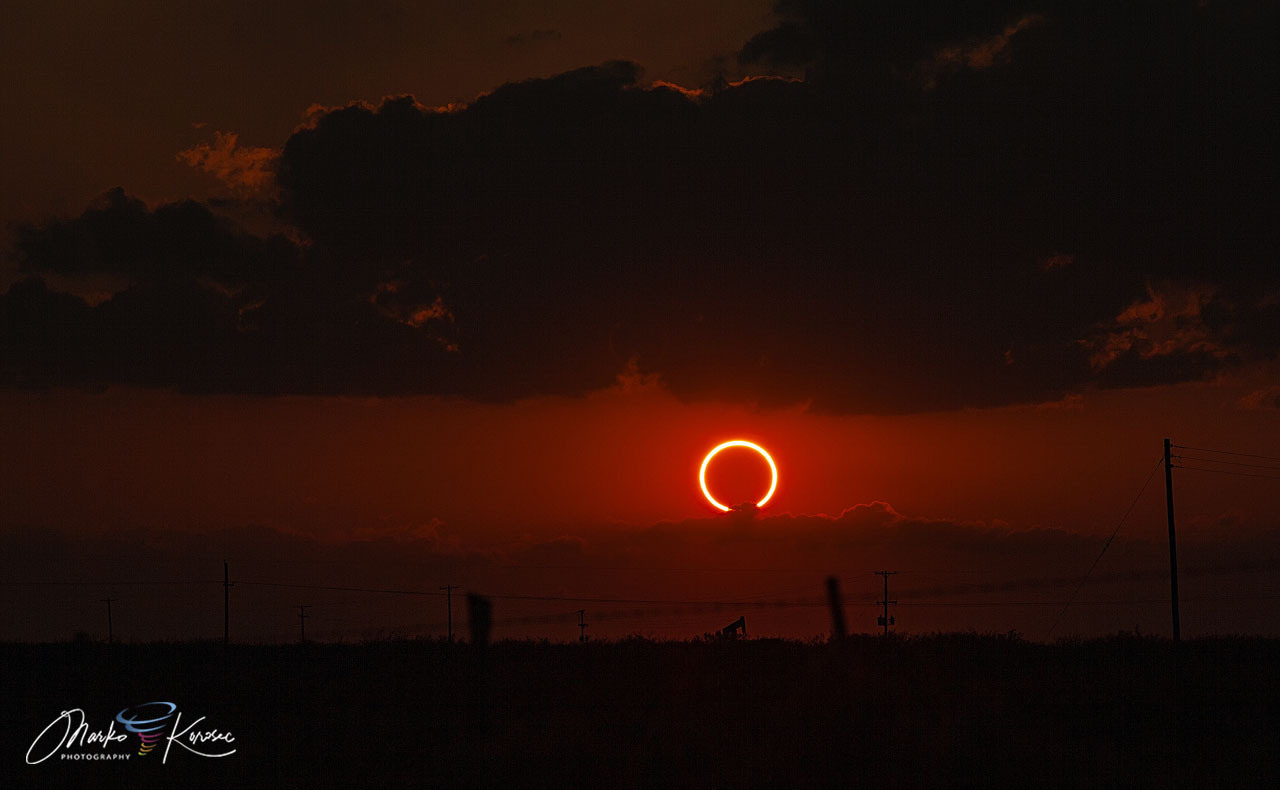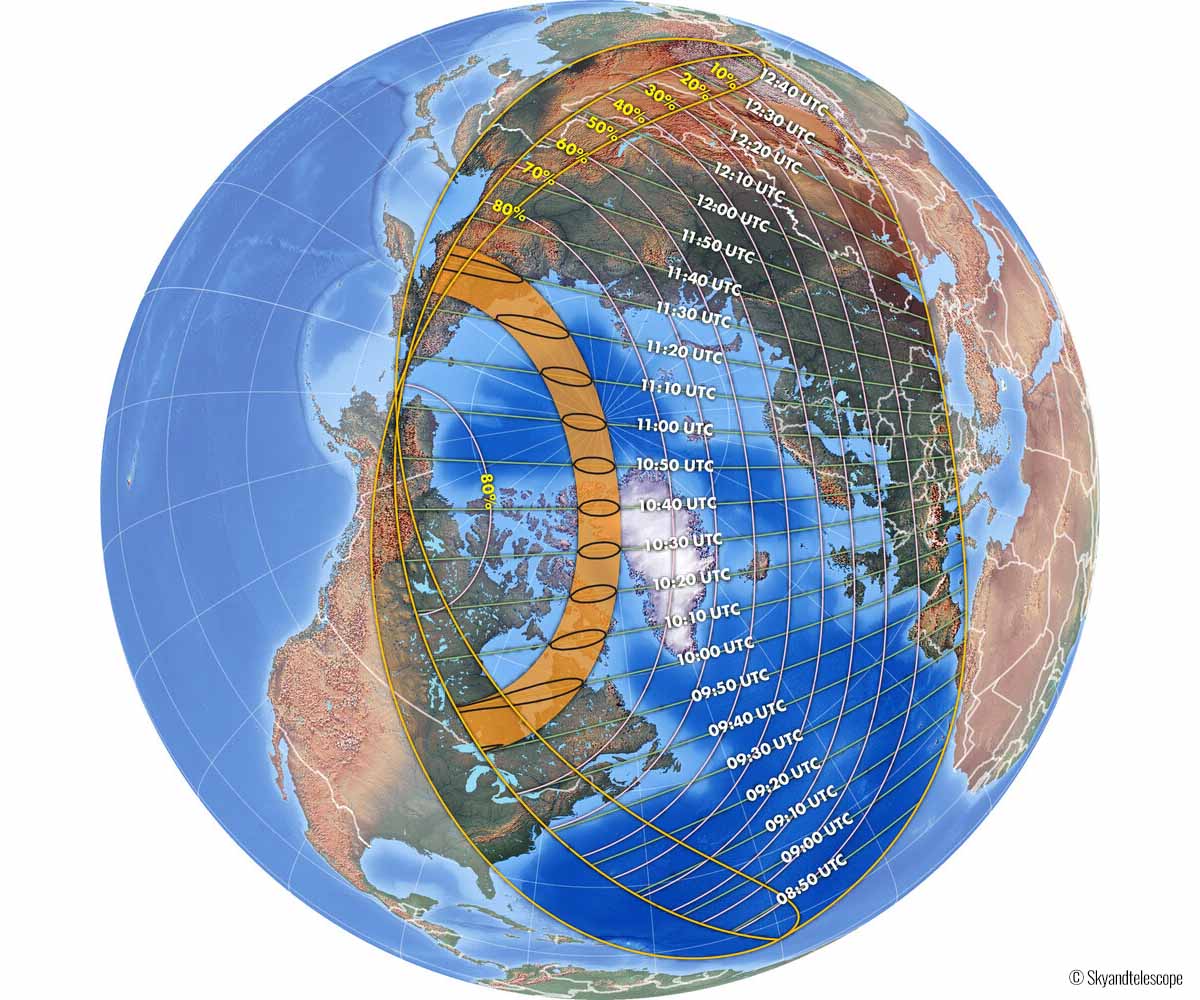Just a few days is left for a spectacular celestial show for many across North America, the Atlantic, Europe, and Asia. The first solar eclipse of 2021 happens on Thursday, June 10th. Actually, a rare Annular Solar eclipse, known as the Ring of Fire eclipse. Here is how to watch it and how we can photograph it.
As you have already noticed on the news by now, a special celestial event is coming up this week, on Thursday, June 10th. This week, the Moon comes into Earth’s elliptical orbit, resulting in what is known as the Solar Eclipse. But this time, the Moon will be too far from the Earth to completely obscure over the Sun.
HOW TO PHOTOGRAPH the Solar Eclipse – A spectacular and rare Ring Of Fire eclipse on June 10th
So this results in something pretty rare – a bright ring will surround the new Moon silhouette at the peak time of the solar eclipse, known as the Ring Of Fire. This is the outer rim of the sun.
The event will be especially spectacular for millions of Canadians and Americans along the East Coast, Mid-Atlantic, and the Northeast. The eclipse happens during the sunrise, so if you are lucky to get clear skies, it will be a truly spectacular sight on your eastern horizon.

Above: A Ring Of Fire solar eclipse in Texas, May 20th, 2012. Photo by Marko Korosec
These kinds of solar eclipses count as partial, given the Sun is not being completely obscured by the Moon. But always give a very dramatic celestial show with the annulus ring of bright light appearing in the darkening sky. Many who had seen it, can tell you it is a spectacular event to experience.
The annular eclipse will start at sunrise over the northern part of Lake Superior (Ontario, Canada). It then continues across the Polar (Arctic) region (Greenland) and across the North Pole through Thursday midday and ending up over northeast Siberia during the sunset.
The middle stage of the eclipse – or the Ring Of Fire – will last just a few seconds less than 4 minutes, 3 minutes, and 51 seconds precisely.
IMPORTANT: The Solar eclipse, partial, annular, or total eclipse, could significantly damage your eyes if would watch it with the unaided eye. Always, ALWAYS use eye protection with solar glasses or solar filters to watch any kind of solar eclipses.
WHAT IS THE SOLAR ECLIPSE?
A solar eclipse occurs when the Moon crosses between the Sun and the Earth, while all three must be fully aligned together. The Moon can partially or completely block the Sun’s light to the viewers on the Earth, casting a shadow to the surface.
If we want to get a total solar eclipse, then the Moon, the Sun, and the Earth must all line up such that the Moon completely blocks out the sun to viewers on part of Earth’s surface. Below is the conceptual diagram explanation to imagine how the solar eclipse occurs.

The residents of Earth are actually very lucky to be able to see total solar eclipses. As we can see from the image above, a lot of factors are needed to align together that an eclipse happens. The moon needs to be just the right size and distance from Earth, that its shadow cast appears on the surface. Just a minor difference in the orbit of the Moon wouldn’t bring the eclipse at all.
If the Moon is not completely aligned with the Earth’s orbit, observers on the surface see the partial solar eclipse. But there is something more, which occurs even rarer than the usual partial eclipse. If the Moon is the farthest from the Earth, known as the apogee position, observers on Earth could see the Ring of Fire eclipse.

Above: A total solar eclipse in Wyoming on August 21st, 2017. Photo by Marko Korosec
The main difference comes as the Moon doesn’t orbit the Earth in a perfect circle. Instead, Moon travels in an elliptic orbit that brings it closer to or farther from Earth in its orbit at times.
For example in this year, the farthest (apogee) position occurred on May 11, 2021, when the Moon was 252,595 miles or 406,512 km away from Earth. While the closest (perigee) position occurs on December 4th, 2021 when the Moon will be 221,702 miles or 356,794 km away). So, the elliptic orbit brings a difference of roughly 30,000 miles (50,000 km) between the apogee and perigee.

Above: When the moon is in the apogee position, it is known as the Micro moon event. While it is known as the Supermoon when the perigee occurs. Moon can be up to 15% bigger and up to 30% brighter when a supermoon happens.
Note: The Total Solar Eclipses are strongly localized and very short-term events, thanks to the geometry of eclipses. The Moon’s shadow is therefore pretty narrow when it reaches the Earth’s surface. This means that areas where the total or annular eclipse is visible, are also very small and last only a couple of minutes at maximum.
The Moon’s umbral shadow is at most 165 miles (267 km) across on the Earth, the totality is lasting up to about 7.5 minutes, with the shadow moving rapidly from west to east. So the patch of fast-moving darkness across Earth’s surface brings the swath of totality only for people watching the solar eclipse within this narrow band.
For those people observing outside the path of totality, they will only see a partial eclipse, as the Moon covers only a portion of the Sun.
Aside note: In the far future, about 600 million years from now, observers on Earth will not be able to see total solar eclipses anymore. This is because our Moon is very slowly but gradually moving away from the Earth. So, at some point, the total solar eclipse will not be visible from the Earth’s surface anymore. The Moon will cover even less of the Sun’s disc.

Above: A Ring Of Fire solar eclipse in Texas, May 20th, 2012. Photo by Marko Korosec
But not to worry about, there will be plenty of solar eclipses in the coming years and decades for us living in this century.
WHAT IS THE RING OF FIRE – AN ANNULAR SOLAR ECLIPSE?
Looking over the graphics above, the Moon is traveling around the Earth in an elliptic orbit. If the alignment of the Sun, Moon, and Earth occurs when the Moon is farthest away from the Earth’s surface, the Sun’s disk is not completely obscured. So the Moon’s diameter appears a bit smaller and is unable to entirely block the Sun.
This celestial snow is known as a very dramatic Ring Of Fire – Annual Solar Eclipse. A quite stunning annulus, the ring appears around the Moon. Since this is not a total eclipse phase, the edges of the Sun are still visible around the Moon as a glowing halo.

Bottom line, the Annular Solar Eclipses are very similar to the total eclipses when the Moon, Earth, and Sun are aligned. In both events, the moon moves directly in front of the Sun as viewed from Earth.
But when the Ring Of Fire eclipse happens, a total eclipse does not happen as the Moon doesn’t fully block out the visible disk of the Sun. When it travels farther away from Earth, we see a tiny ring or an annulus around the Moon.
While partial or annular eclipses are stunning to see, it is only during the brief moments (normally a matter of a few minutes) of a total eclipse that the Sun disappears from the daytime sky. And the midday turns into dusk time.

Above: Partial Solar Eclipse during sunset in Texas, May 20th, 2012. Photo by Marko Korosec
WHERE TO WATCH THE RING OF FIRE ECLIPSE 2021?
On June 10th, the annular solar eclipse – Ring Of Fire – is viewable from parts of Canada, across the Hudson Bay and Greenland, over the Polar (Arctic) Region including the North Pole, and parts of northeast Russia (Siberia). The complete eclipse lasts about 1 hour and 40 minutes.
From any of these areas along the swath of annular solar eclipse, the annular Ring Of Fire stage of the eclipse lasts a maximum of 3 minutes and 51 seconds.

Above: The path of the Annular Solar Eclipse on Jun 10th, 2021. Source: Sky and telescope
Skywatchers in North America, the North Atlantic, a large part of Europe, Asia, and the Arctic will be able to watch the celestial event as a Partial Solar Eclipse. The closer you live to the swath of the totality, the larger part of the Sun’s disk will be obscured by the Moon.
ECLIPSE AT SUNRISE IN NORTH AMERICA
It will be a quite spectacular sunrise for millions of Americans over the Mid-Atlantic, the Great Lakes, and the Northeast United States. Although not many could see the perfect Ring Of Fire this time, it will be quite a dramatic sunrise show for sure. Hopefully will clear skies, indeed!
A deeper eclipse will remain in view for about an hour after the Sun rises on the eastern horizon on Thursday morning. The eclipse magnitude in New York City will reach 80%, which means that the Moon will cover 80 percent of the Sun’s disk.
73% of the Sun will be obscured over Boston, but only 23% in Chicago. The Canadian Toronto will see 80% of the Sun obscured.

Above: Eclipse-viewing area in the United States, June 10th, 2021
As it will be still dark further west, the partial eclipse will not be visible from the areas west of eastern South Dakota, central Iowa, southern Illinois, or central Georgia this time.
PARTIAL ECLIPSE OVER THE NORTH ATLANTIC, EUROPE, AND ASIA
A lot of European residents will be able to observe the partial solar eclipse from start to finish, as it will take place higher in the sky through the late morning into midday hours. The full eclipse will last for about 2 hours and a half across northern Europe, and only about an hour over central Europe.
The farther north in Europe you live, the deeper the partial eclipse will be. The Norwegian Tromso will have 51% of the Sun obscured by the Moon, while Oslo will have it only about 30% covered. Glasgow, Scotland will experience similar disc coverage, around 32%. The Faroes’ capital Thorshavn will experience about 46% during the peak of the eclipse.
The biggest part of the Sun’s disk obscured by the Moon will be over Iceland with Reykjavik having the coverage of 60.5%, just slightly less than two-thirds of the Sun’s disc.

Above: Eclipse viewing area in Europe, June 10th, 2021
Further south towards the edge of the eclipse swath, Venice (Italy) will only see a tiny part of the Sun covered, about 2.2%. Madrid, Spain will see a 5% coverage, while Frankfurt, Germany, and Warsaw, Poland will see about 10% of the eclipse magnitude. The eclipse will not be visible across the southern Mediterranean, southern Balkan peninsula, and Turkey this time.
June 10th partial Solar Eclipse will also be visible from a large part of Asia from the mid to late afternoon hours. Most of Siberia (Russia) will experience 50-90% of the Sun’s disk obscured. The swath of totality, a few minutes event, spreads only across the far northeast Siberia during sunset time.

It will be only a short celestial event in Beijing, China, as the Moon will eclipse the Sun for the final 12 minutes of the day, happening right before the sunset. But also the maximum eclipse magnitude will only be about 8% when the Sun goes down.
HOW TO PHOTOGRAPH SOLAR ECLIPSE
Glasses and lens protection
Get eclipse glasses first, those will help you to view the eclipse with your own eyes. And you will need them to better aim your camera at the Sun. Always, when you are photographing the Sun (no matter the sunspots or the partial or annular eclipse), you will need a solar filter for your camera and lens.
Aside note: The ONLY time the solar filter is not needed is when the Sun is completely covered by the Moon. In other words, this means during the totality of the solar eclipse.
Camera use
A special or professional camera to photograph the eclipse is not needed. Every camera on the market will do it, you just need the protection for the camera, and indeed your eyes.
The only difference camera would make is the advantage of using a crop sensor camera instead of having a full-frame camera. The focal length multiplier effect with the crop cameras results in a bigger eclipse on the pictures at the same focal length.
Camera lens
As for the camera lens, it most often depends on what kind of photo you want to capture. If you plan to include the landscape on the photo, then use wide to the ultra-wide lens (e.g. 14-24 mm). The Sun, however, will be a small dot in your photo, but it can be a great addition to your composition.

Above: Size of the eclipse depending on the focal length
If you plan to do close-up views of the eclipse, then you need to use a zoom lens. 200-600 mm lens could give you pretty good results. The longer the focal length, the better (larger) photograph of the eclipse you get. You can also photograph all the phases of the eclipse with the long/zoom lens.
Tripod and shutter release
As the Sun is very bright, no matter the phase of the solar eclipse, technically you wouldn’t need a camera placed on the tripod. The shutter speeds are short (fast), so photographs shouldn’t be shaken at all.
Use a remote shutter release. When the Moon obscures a large part of the Sun, it quickly gets quite dark. Therefore, your shutter speeds will become longer and you would normally use a remote shutter release to trigger your camera. You can use a remote with a cable release, electronic release, intervalometer, or mobile device. All that helps to prevent camera shake and blurring of your images at the end.
When you are not using the remote shutter release and press the shutter button of your camera with your fingers, it very often happens that you shake your camera and your images won’t be 100% sharp anymore. We want sharp at any time! Nothing is more frustrating than the ruined sharpness of the eclipse.
Note (although not in this case): During the total eclipse, the Sun is blocked out completely, which basically means that you are photographing in the full darkness. So a tripod is a must-have during the totality.
Basic settings
Let’s take a look at the very basic settings that normally work, although be always prepared to experiment with some extra settings around these basics. Using bracketing (taking consecutive photographs with different exposures) is helpful too.
- Use RAW format: Do not shoot in JPEG. When you are shooting in RAW, it collects much data which we can use for better post-processing work later.
- ISO number: Use a native ISO, normally that is ISO 100 on most of the cameras in the market. This will give you great quality of the photograph, preventing any image noise. Use higher values, e.g. 200-400 ISO only if needed, but preferred is ISO 100.
- Closed Aperture: When we are photographing the eclipse, we close the Aperture to f/8 down to f/11. These are the most- preferred settings when you are also doing the close-up shooting of the different solar eclipse phases.
- Shutter Speed: With the ISO and Aperture settings above, use the shutter speed from 1/500s to 1/1000s at f/8 and ISO 100. Playing some with the settings of the shutter speed, you will get the photograph correctly exposed.
TIPS ON HOW TO OBSERVE SOLAR ECLIPSE SAFELY
If you live in the part of June 10th Solar Eclipse and you didn’t already, you should buy solar glasses. If you also plan to photograph the eclipse, buy solar filters to place on the end of the lens. Don’t mess around with the dangerous light from the Sun.
Remember, always, ALWAYS, use solar filters when observing the Sun. No matter it is a normal day, partial, annular, or total solar eclipse. The solar filters must not have any scratches, punctures, torn, or otherwise damage. If you find those, discard them and buy a new one. No exception.
If you plan to observe the eclipse with your children, always supervise them while using solar glasses or filters. Just a bit and wrong moment could damage your or their eyes permanently.
If you normally wear glasses, put your eclipse glasses on over them, or hold your handheld filter in front of them. Never observe the Sun with an unaided eye.

Above: Partial Solar Eclipse in Texas, May 20th, 2012. Photo by Marko Korosec
Also, you should never look at the uneclipsed or partially eclipsed sun through an unfiltered camera, telescope, binoculars, or another optical device. Do not look at the Sun through a camera, a telescope, binoculars, or any other optical device while using your eclipse glasses or handheld solar viewer.
If you do not feel confident enough, seek some advice from an astronomer before using a solar filter with a camera, telescope, or binoculars. The solar filters must be attached to the front of any telescope, or camera lens.
SEE ALSO: